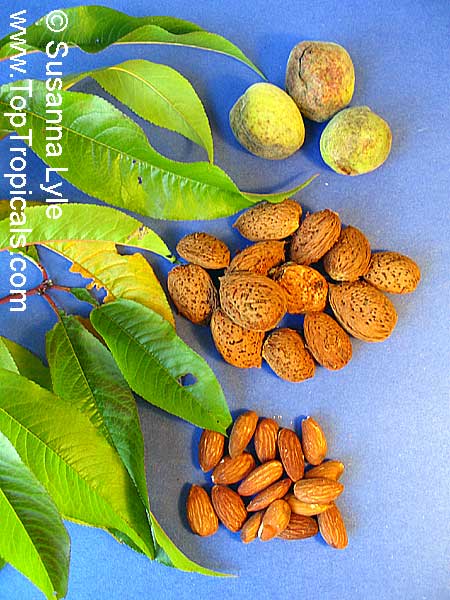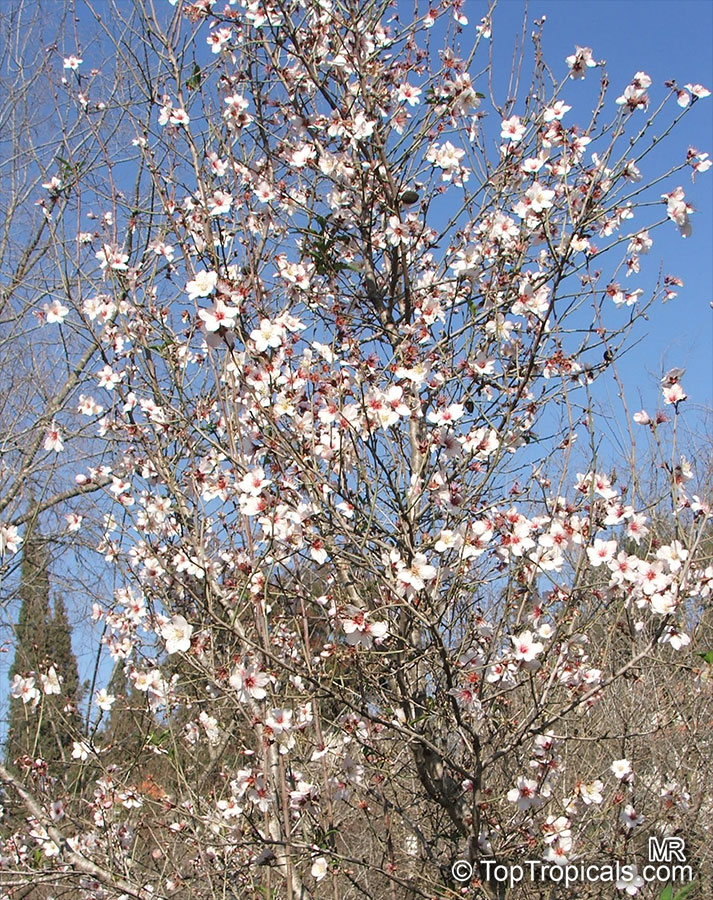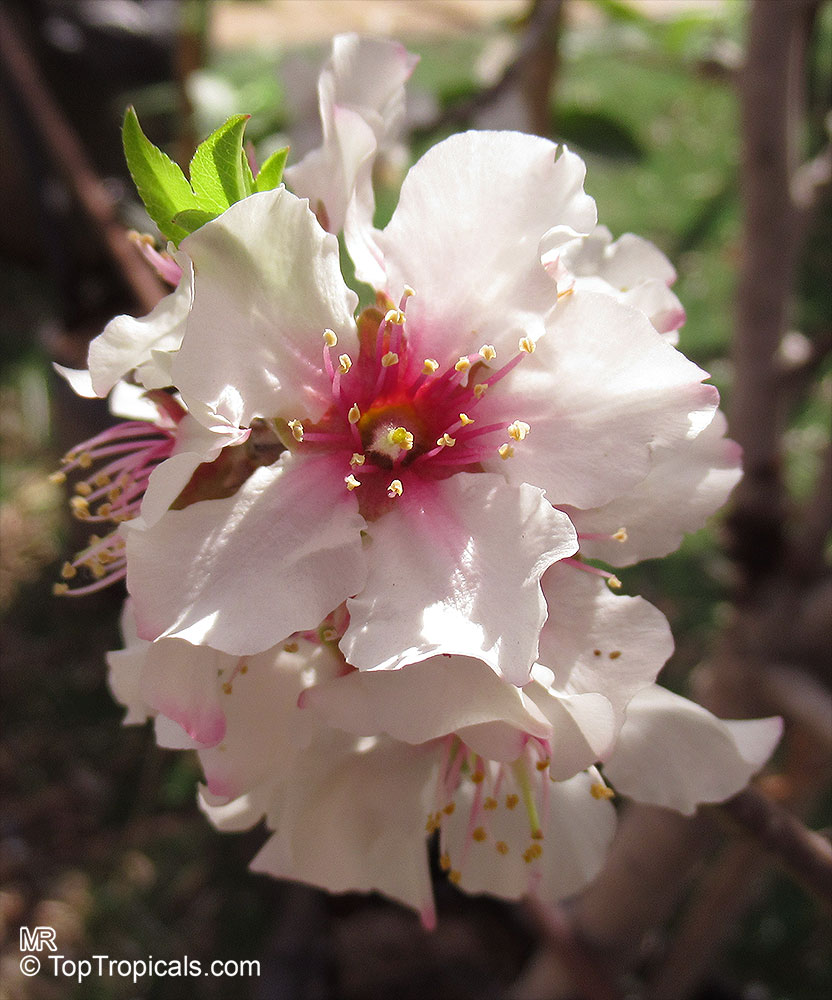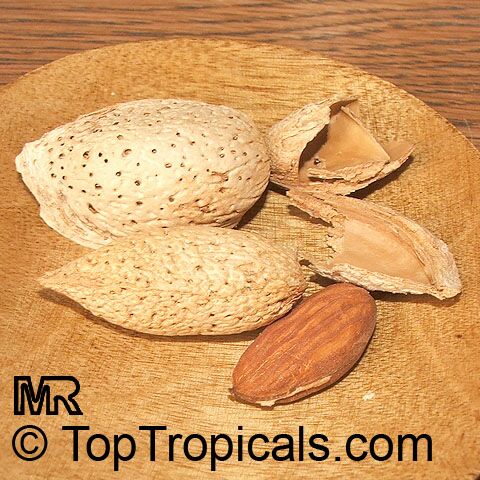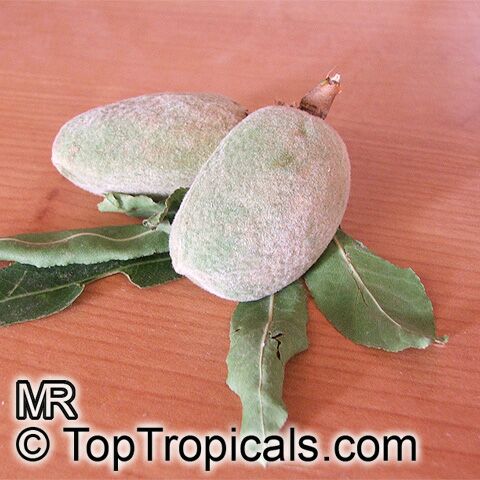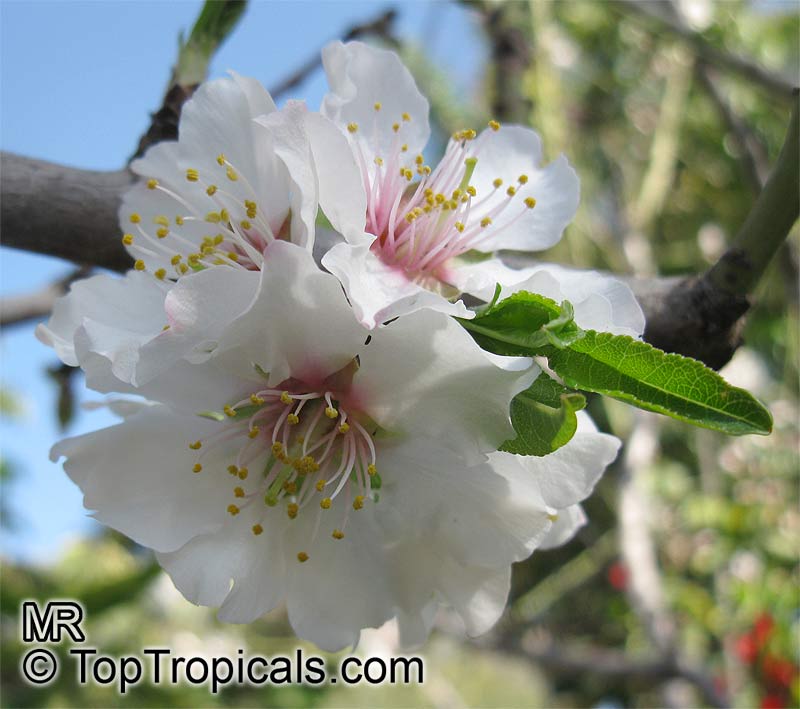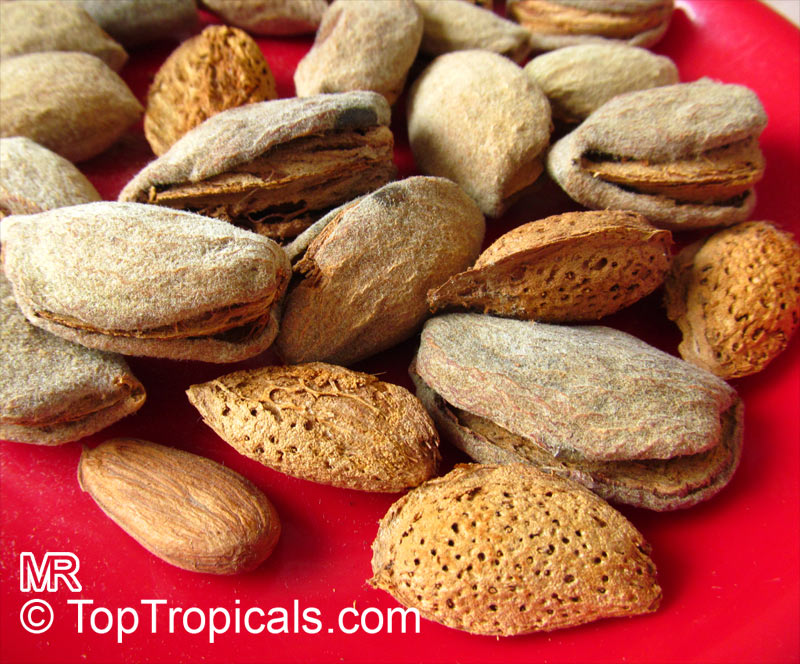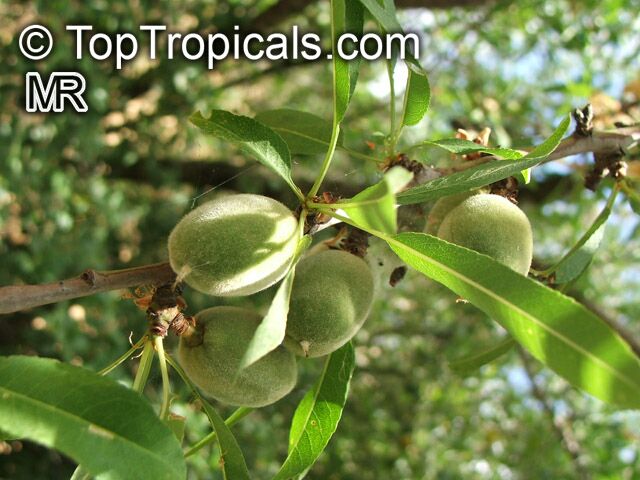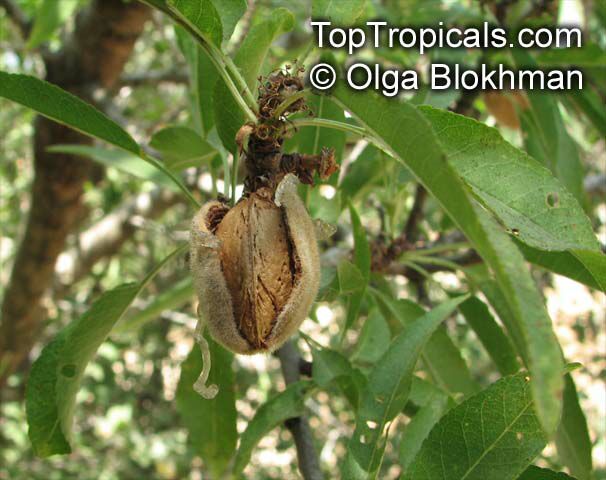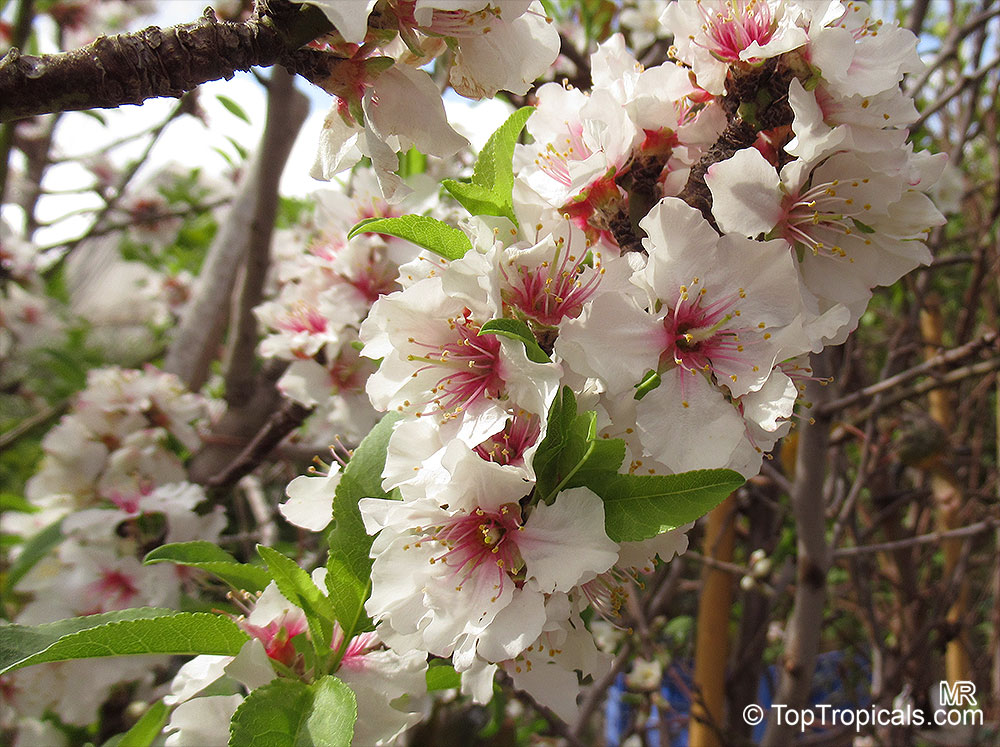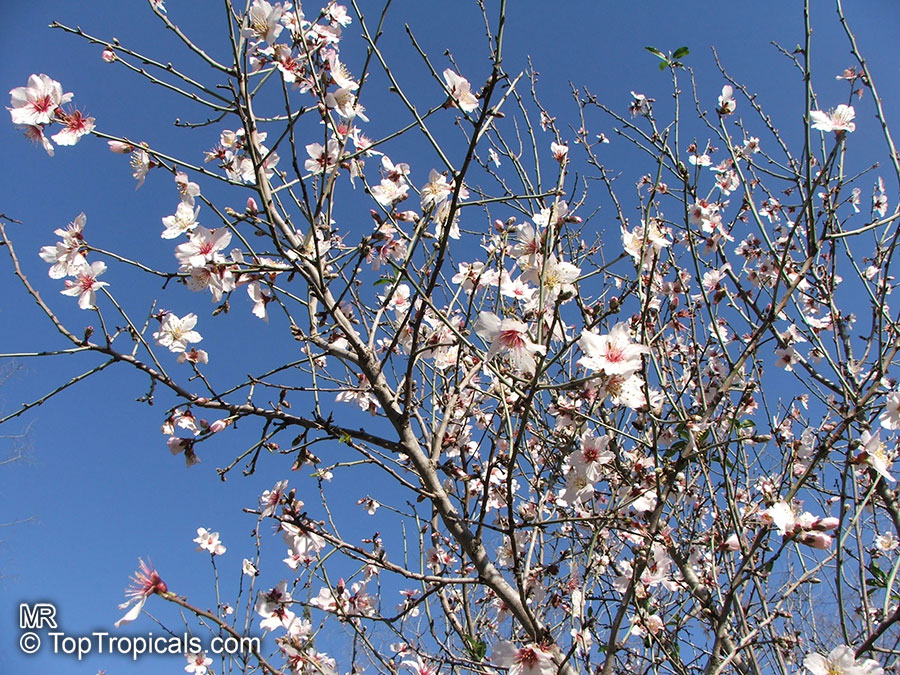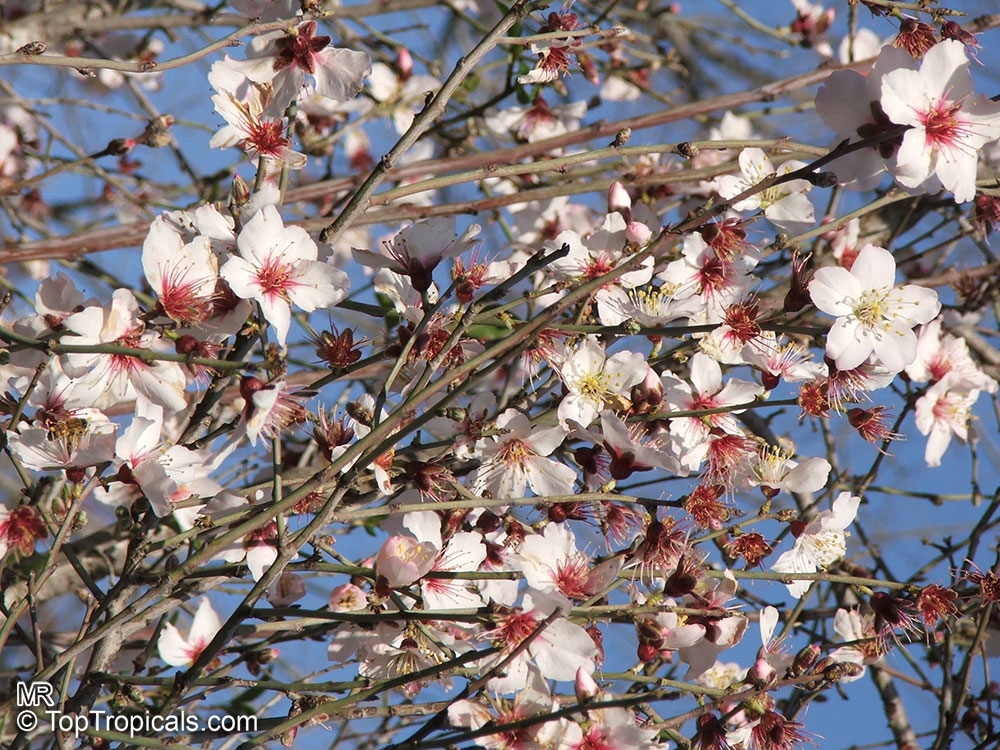Prunus dulcis (Almond)
Top Tropicals Plant Encyclopedia
Botanical names: Prunus dulcis, Prunus amygdalus, Amygdalus communis
Common name: Almond
Family: Rosaceae
Origin: Middle East













Almond trees (Prunus dulcis) are known for their beautiful pink and white flowers that attract butterflies and hummingbirds in the spring. They are deciduous, meaning they lose their leaves in the winter, making them a popular choice for bonsai. Almond fruit, which is a drupe with a single pit inside a green, fleshy layer, is rich in monounsaturated fatty acids and dietary fiber and provides numerous health benefits. Each tree can produce between five to eight pounds of almonds per year, with a mature tree in a warm climate potentially yielding up to twenty pounds. The tree can be grown in USDA Zones 7-10. In colder climates, almond trees can be grown in pots.
These trees prefer full sun but can also grow in semi-shade. They require moderate water and are able to withstand extended dry periods. Almonds are known to thrive in deep, loamy, well-drained soils but can also tolerate poor soils and drought during fruit development better than many other tree crops. In intensive orchards, the soil is managed similarly to other stone fruit trees, while in less intensive plantings in the Mediterranean region, almonds can be found growing on calcareous, rocky, and droughty soils. As with all Prunus species, almonds cannot tolerate wet, poorly drained soil.
Almonds are widely used in confectionery items such as candy bars, cakes, and toppings. A large portion of the almond crop is roasted and flavored or salted and sold in cans, while broken and small kernels are used in confectionery.
Similar plants: Prunus dulcis (Almond)
- Prunus armeniaca (Apricot)
- Prunus persica (Peach)
- Prunus webbii (Wild Almond tree )
- Prunus avium (Wild Cherry)
- Prunus campanulata (Taiwan Cherry)
- Prunus cerasifera (Cherry Plum)
- Prunus cerasoides (Himalayan flowering cherry)
- Prunus glandulosa (Chinese Bush Cherry)
- Prunus ilicifolia (Hollyleaf Cherry)
- Prunus laurocerasus (Cherry Laurel)
